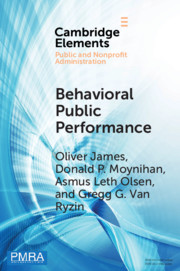Element contents
Behavioral Public Performance
Published online by Cambridge University Press: 27 May 2020
Summary
Keywords
- Type
- Element
- Information
- Online ISBN: 9781108761338Publisher: Cambridge University PressPrint publication: 25 June 2020
References
- 59
- Cited by

